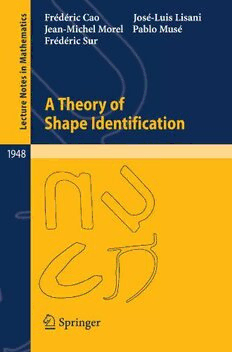
A Theory of Shape Identification PDF
216 Pages·2008·10.314 MB·English
Most books are stored in the elastic cloud where traffic is expensive. For this reason, we have a limit on daily download.
Preview A Theory of Shape Identification
Description:
Recent years have seen dramatic progress in shape recognition algorithms applied to ever-growing image databases. They have been applied to image stitching, stereo vision, image mosaics, solid object recognition and video or web image retrieval. More fundamentally, the ability of humans and animals to detect and recognize shapes is one of the enigmas of perception. The book describes a complete method that starts from a query image and an image database and yields a list of the images in the database containing shapes present in the query image. A false alarm number is associated to each detection. Many experiments will show that familiar simple shapes or images can reliably be identified with false alarm numbers ranging from 10-5 to less than 10-300. Technically speaking, there are two main issues. The first is extracting invariant shape descriptors from digital images. The second is deciding whether two shape descriptors are identifiable as the same shape or not. A perceptual principle, the Helmholtz principle, is the cornerstone of this decision. These decisions rely on elementary stochastic geometry and compute a false alarm number. The lower this number, the more secure the identification. The description of the processes, the many experiments on digital images and the simple proofs of mathematical correctness are interlaced so as to make a reading accessible to various audiences, such as students, engineers, and researchers.
See more
The list of books you might like
Most books are stored in the elastic cloud where traffic is expensive. For this reason, we have a limit on daily download.
